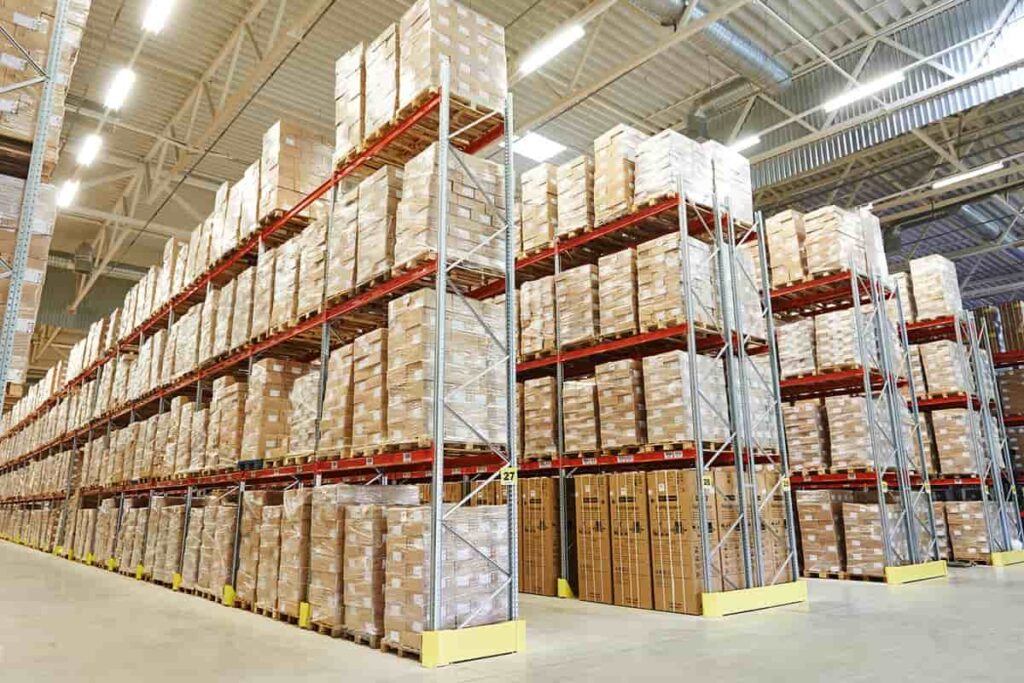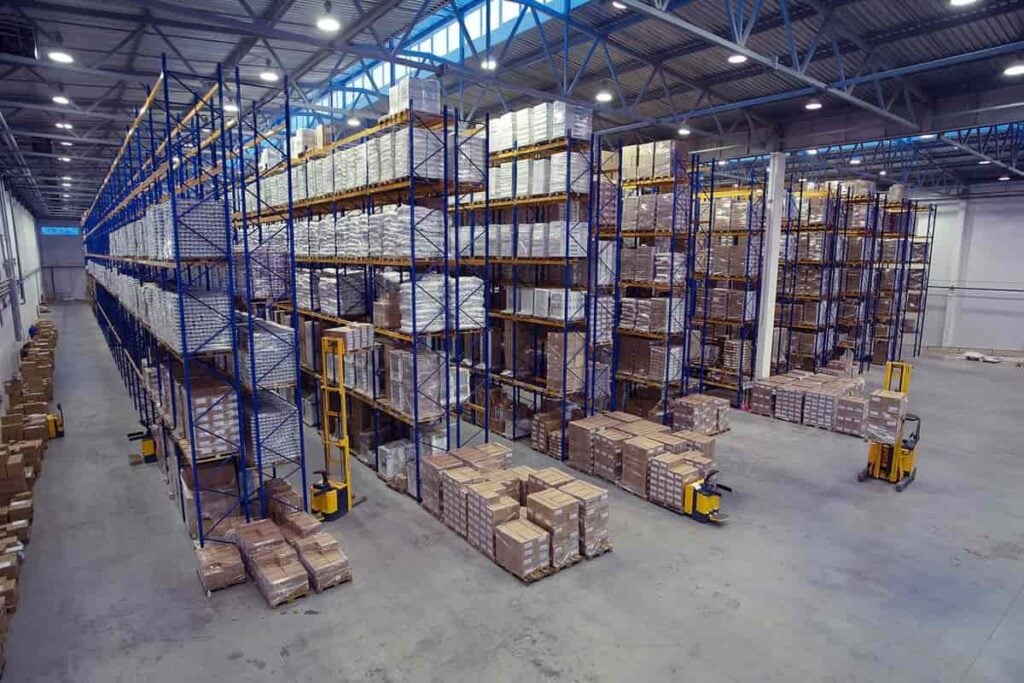5 Real-World Use Cases for Blockchain in Supply Chains
Table of contents

Using blockchain technology to create efficiencies in large industries could reap billion-dollar rewards for driven founders. For example, we recently met with a startup called Othera that is using blockchain to transform the residential mortgage industry. They’ve partnered with a co-op that represents over 150 mortgage originators that generate in excess of $230 billion in mortgages per year. The founders are experienced entrepreneurs who are obsessed with nailing the product-market-fit. It’s a great example of a blockchain technology use case with real potential.
Last time we checked in, blockchain technology seemed to belong to broad industry consortiums obsessed with getting some standards in place. “Thought leaders” like IBM claim to be using blockchain as a way to create efficiencies and sell other cloud services from their portfolio. In some cases, achieving traction with their blockchain platform seems like an uphill battle.

As long as the IBM blockchain platform continues to hide behind the “Cognitive Services” curtain – which now accounts for close to 30% of their revenues – we’ll never truly know what sort of success they’re having with blockchain technology. What we can do is look at use cases other startups are tackling, and assume that Big Blue is probably doing something similar. Today, we’re going to look at five real-world blockchain use cases for supply chains that are seeing some traction.
5 Blockchain Uses Cases in Supply Chain Management
Making Supply Chains Transparent
The word “provenance” refers to “the place of origin or earliest known history of something.” It’s also the name of a blockchain startup that wants to convey such information to consumers. “Pioneering blockchain technology since 2013,” says Provenance, a statement that makes you realize that it’s already been seven years since people first started getting fleeced by ICOs. Founded in 2013, Provenance has taken in $1.3 million in funding to use blockchain technology to increase supply chain transparency by letting the consumer see exactly where the product they’re about to buy comes from.
Late last year, we wrote about “7 Tracking Technologies for Supply Chain Transparency,” some of which were blockchain powered. The MBA who authored that piece cynically quipped “consumers are also increasingly interested in sustainability and fairy tales engaging narratives about ethically sourced products.” That’s exactly what Provenance is trying to do when they say:
We envision a future where every physical product has a digital history, allowing you to trace and verify its origins, attributes and impact.
Credit: Provenance
In the future, a customer will be able to scan a QR code on any grocery store item to see the path it took through the supply chain.

Embedded in this QR code will also be detailed information that can be used by supply chain participants to learn about the product’s path through the supply chain. Whether or not Provenance can work on that scale as opposed to selling engaging narratives to boutique clothing designers remains to be seen. Another startup working on a similar use case is Everledger.
Authenticating Luxury Goods
Everledger is a self-described “digital transparency company” that hails from London, England having raised just over $30 million since it was founded in 2015. Notable investors include Fidelity, Mastercard, and Chinese Internet giant Tencent which led their last $20 million round in Sept 2019. When it comes to luxury goods, the brands usually stand on their own. Transparency becomes more about authentication. It’s not just about blockchain says the company, but a “symphony of technologies,” things like IoT sensors and intelligent labeling. Given the massive markup seen in luxury items and their overall price inelasticity, adding all the bells and whistles can just be paid for by consumers during the next price increase.
A cursory look at Everledger’s company blog shows a major focus on using blockchain to trace diamonds from mine to finger. Around 80%-90% of gemstones are mined by small companies or individuals. This decentralization makes it difficult to provide accurate information about a gemstone’s origin, environmental impact, and quality. Four of Everledger’s five case studies are focused on jewelry companies. For example, US-based retailer Fred Meyer Jewelers uses the Everledger platform to show the journey of its diamonds in its Rock Solid collection, which has been extended across 100 stores in the United States. Once millennials finally have enough income to purchase luxury items, there will be an expectation that authenticity can be proven – and shared shortly afterwards on Instagram.
Blockchain for Food Safety
It’s not just about engaging narratives, but also ensuring safety. We previously visited the land of fairy tales – New Zealand – to meet with a biosecurity startup, OnSide, that uses influence maximization algorithms to track the spread of disease in livestock. The need for such a solution is being driven by a recently formed consortium called Covantis which is attempting to “modernize global trade operations” using blockchain technology. It’s being driven by some of the world’s biggest food producers like Bunge, Cargill, Glencore Agriculture, and Archer Daniels Midland (one of the 30 dividend growth stocks we hold).
The ability to trace exactly where a product has been is a prerequisite to controlling food safety. That’s one goal of IBM Food Trust, the only network of its kind to connect participants across the food supply through a permissioned, permanent, and shared record of food system data. And it seems to be reaping benefits.
Clients that use IBM blockchain are able to trace from store back to the farm in 2.2 seconds. French supermarket chain Carrefour claims to have seen sales boosted for blockchain-enabled products because of increased customer trust. Nestlé is using the platform to assure food safety for palm oil and dairy. Albertsons, one of the biggest grocery stores in the U.S., is now using IBM’s blockchain technology to track romaine (considered a high-risk food product). Walmart was using the platform to track leafy greens and is now expanding beyond that.
Interesting side note. Walmart’s Vice President for Food Safety who helped bring blockchain to the company, Frank Yiannas, is now Deputy Commissioner for Food Policy and Response at the FDA. And he now wants to begin using blockchain for tracking food sources. It’s only a matter of time before traceability becomes mandated and large-scale food recalls become a thing of the past.
Smart Contracts on Blockchain
Since the 1970s, supply chains have been trying to interact digitally with initiatives like the Electronic Data Interchange (EDI) which attempts to create communication standards. It’s a global world, and there ought to be a set of standards we all use to communicate when trading goods. When a product moves from supplier to consumer, the same contract doesn’t accompany the product through the supply chain. That’s because not everyone thinks that all information ought to be transparent to all members of the supply chain. The answer just might be smart contracts.
Founded in 2014, San Francisco startup Skuchain has taken in an undisclosed amount of funding to develop their patented Zero Knowledge Collaboration® technology that implements sophisticated access controls directly on the blockchain ledger.” That’s a convoluted way of saying that smart contracts will allow participants in a supply chain to control who gets to see what data while the entirety of data can be used by another party for optimizations. It would also pave the way for data to be bought and sold across the supply chain, something that’s already happening in some supply chains. That’s according to Rebecca Liao, cofounder of Skuchain, who was recently telling MIT Tech Review that – like every other startup we hear from these days – the coronavirus is simply unlocking the real value in their business model that wasn’t obvious before the pandemic emerged. (We’re only teasing you, Rebecca, there certainly does seem to be some “there” there.)
Shuffling paper around may take lots of time and transfer lots of germs, but it’s not just about improving paper contracts. We need to expand our limited idea of what constitutes a contract. For example, a smart contract might be tied to sensors on an industrial machine where maintenance and usage can be monitored, and each party involved – from the machine manufacturer to the bank that eased the machine – can be tied in contractually to how the machine is operated and used. That’s where the Internet of Things (IoT) meets blockchain. Next, let’s look at where fintech meets blockchain.
Supply Chain Finance
There’s lots of money to be made in supply chain finance. Just ask Greensill Capital, a $3.5 billion unicorn that has extended more than $150 billion in supply chain financing to over 8 million customers and suppliers in more than 175 countries. Founded in 2011, Greensill took in an undisclosed amount of funding to pursue all kinds of supply chain finance solutions. For example, when a business sells its accounts receivable to a third party at a discount, it’s called “factoring.”
That’s the business Greensill started in. They’ve now gone beyond financing account receivables for small companies and are involved in sectors as diverse as construction, telecoms, aircraft, and power generation. They created the world’s first investment fund to focus solely on supply chain finance assets. The fund won an “A” rating from Moody’s in March last year, which was higher than the weighted average credit quality of the trade receivables actually in the fund, due to the rating of the participating insurers.
When it comes to using blockchain, that’s old news already at Greensill which has been using “distributed ledger technology” since 2013. As Founder Lex Greensill told Trade Finance Magazine, it’s just a tool.
Distributed ledger is about as cool as email is cool. It’s just a tool. People really don’t care about how you deliver capital to them. What they care about is you delivering a solution to the problem.
Credit: Lex Greensill, Interview with Trade Finance Magazine
Maybe many of the successful blockchain implementations aren’t so obvious because the companies using blockchain are too busy executing instead of spending time pontificating to the world about the benefits of using enterprise blockchain technology.
Conclusion
Researching the domain of blockchain startups is kind of a mess. Many “startups” will actually be a website shell and white paper which is all that’s left since the founders raised $20 million in 30 days in an ICO and nobody has heard from them since. Other startups will have a proposed implementation of blockchain that sounds good on paper, but hasn’t achieved any traction. Most of them are solutions looking for a problem to solve. That’s why traction is key for any blockchain startup that wants to blow its horn. We’ve seen enough “we helped 20 coffee growers in Kenya build new homes” stories.
A while back, we covered freight forwarding startup Flexport which is now valued at $3.2 billion. (Paperwork accounts for up to half the cost of container transport.) A Forbes article last year talked about how Flexport breached $440 million in sales during 2018 with the founder stating that they haven’t dabbled in blockchain yet because “he’s waiting for a shipping standard to emerge, or fail to do so, before he’d build one himself.” There’s plenty of transformation that can happen in supply chain management, and you don’t necessarily need blockchain technology to do it.
Sign up to our newsletter to get more of our great research delivered straight to your inbox!
Nanalyze Weekly includes useful insights written by our team of underpaid MBAs, research on new disruptive technology stocks flying under the radar, and summaries of our recent research. Always 100% free.


















